
Storing Vegetables Correctly: Earth Mounds and Other Storage Options
There are a few things to bear in mind when storing root vegetables, onions, garlic, cabbage and pumpkins. Find out how to store your vegetables optimally so that you can provide yourself with your own vegetables all year round. We'll also show you how to create and use soil windrows!
This Article Contains:
Quick Overview
Storage Tips: Earth Mounds & Co.
- Storing carrots: use storable varieties, store in crates with damp sand, in earth mounds
- Storing potatoes: in wooden crates insulated with straw, in complete darkness, in earth mounds
- Storing garlic and onions: hung up to pre-dry for two weeks in a warm and dry place or in the field in dry weather, then store in a dark, dry and cool place
- Storing cabbage : Stand upright or hang by the stalk in a dark, cool pantry or cellar
- Pumpkin storage: Leave to ripen in a warm, dry and light place for 2 - 3 weeks (windowsill, field), then store in a dry, cool place
Storing Vegetables: Differences in Vegetable Types
Not all vegetables can be Preserved by Canning, Preserving, Making Jam or Fermenting. However, many vegetables such as onions, garlic, pumpkins, cabbage and root vegetables can be stored well. This means you can also provide yourself with your own vegetables in winter. Root vegetables such as carrots, potatoes, beet, turnips and kohlrabi are great for storing in an earthen windrow. Onions and garlic should be dried and hung up. Pumpkins should be stored in a dark and cool room before they ripen, just like cabbage. More detailed information is provided in the individual sections.
Storing Carrots: A Guide
For storage, it is best to use late and storable varieties such as "Rodelika" or "Milan". You should also only select carrots without visible damage (cracks, spots, wounds). To store the carrots, layer them in a box with damp sand. Place this in a dark room with the lowest possible temperatures (approx. 2 - 5 ° C/36 - 41 ° F) and high humidity (80 - 90 %). A damp cellar or garden shed is suitable for this. Important: The sand in the box should not be too wet, as this can lead to rotting. Moisten the sand slightly by watering it if it loses moisture over time. Like other root vegetables, you can also store carrots in a soil box.
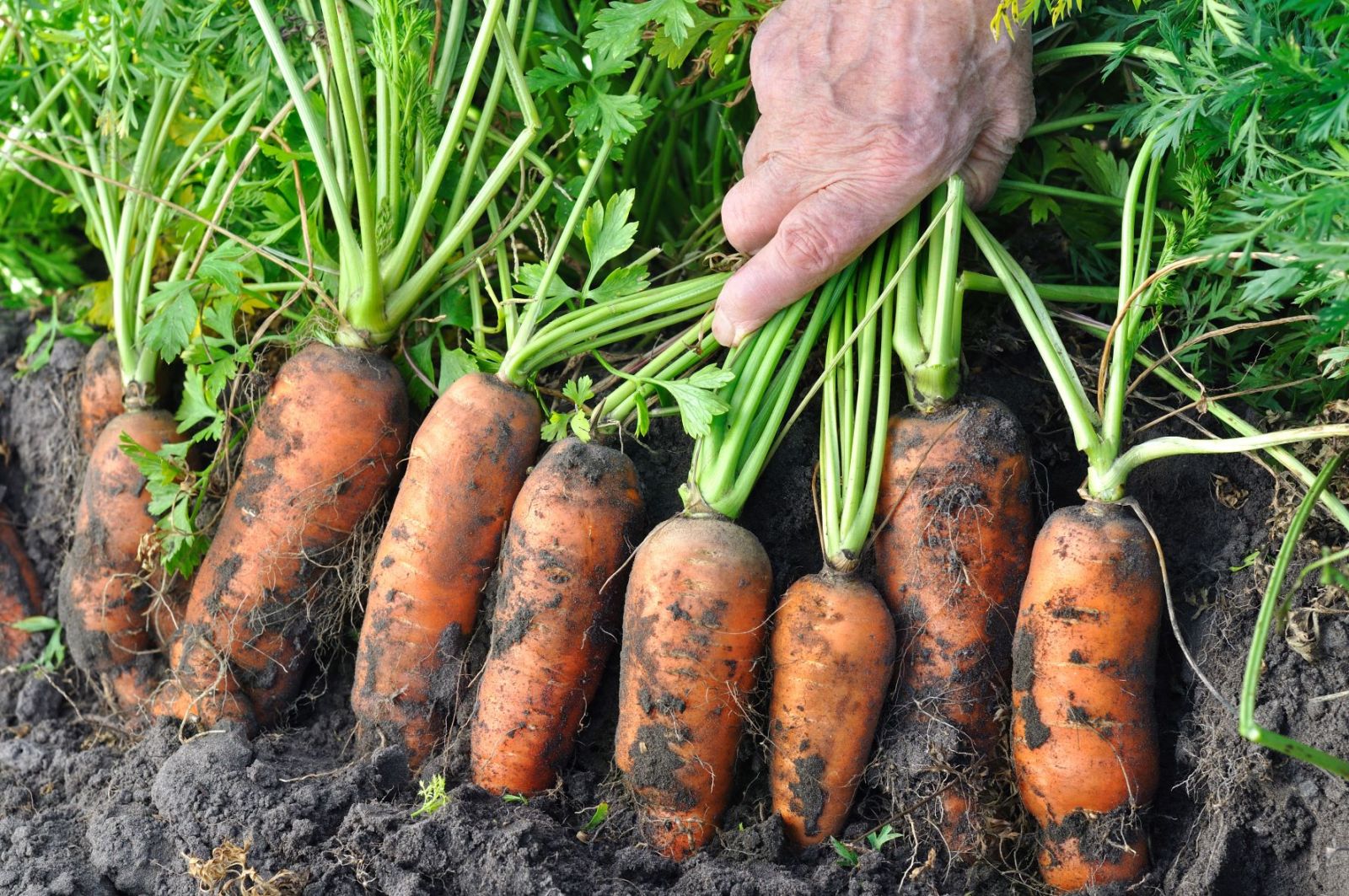
Storing Potatoes Correctly
Potatoes can remain edible for many months if stored properly. You can find out how to do this in our article on Storing Potatoes Correctly. Potatoes and other root vegetables can also be stored in a soil dugout.

Want to Know More?
To exchange ideas with other gardeners and benefit from their experiences, you can visit our Fryd community. Learn more about storage from old hands at gardening.
Become Part of the Community NowRoot Store for Root Vegetables: Storage Without a Cellar
Earth mounds are storage locations dug into the ground where you can store vegetables. They not only offer optimal storage conditions for most root vegetables, but are also particularly suitable for those who do not have a cellar or other storage space. The traditional way of storing vegetables is still popular today! What's more, you can make your own root store with little effort and expense.
Build Your Own Root Store
In order to create an earthen bed, a pit with a depth of approx. 50 cm/19.7 in must first be dug. A fine-meshed wire net lining the walls and base serves as protection against voles and other animals. Wooden boards can be attached to the sides for additional protection and stability. You can also dig a wooden box into the pit to serve as a container. However, it is important that the soil is water-permeable so that no water pools (risk of rotting!). Whether it's a crate or boards, the bottom of the earthen bed should be lined with a 10 cm/3.9 in thick drainage layer of sand.
Alternatively, you can bury an old washing machine drum in the ground. To do this, use a drill to make lots of small holes in the bottom of the drum. A 10 cm/3.9 in thick layer of sand is also required here as drainage.
Filling the Earth Mound
Fill your soil box with the root vegetables you want to store. The soil should only be roughly removed from the vegetables to keep them dry and preserve them for longer. You can easily put different root vegetables together here. Finally, cover the vegetables with a layer of straw at least 10 cm/3.9 in thick (preferably 20 cm/7.9 in). You should place a light wooden cover on top of the straw to protect it from too much rain and wind. A pallet or several thin boards are suitable for this. Cover this wooden cover with a plastic sheet to protect it from moisture. If you want to remove the vegetables, you can simply push the wooden cover to the side and remove the vegetables as required.
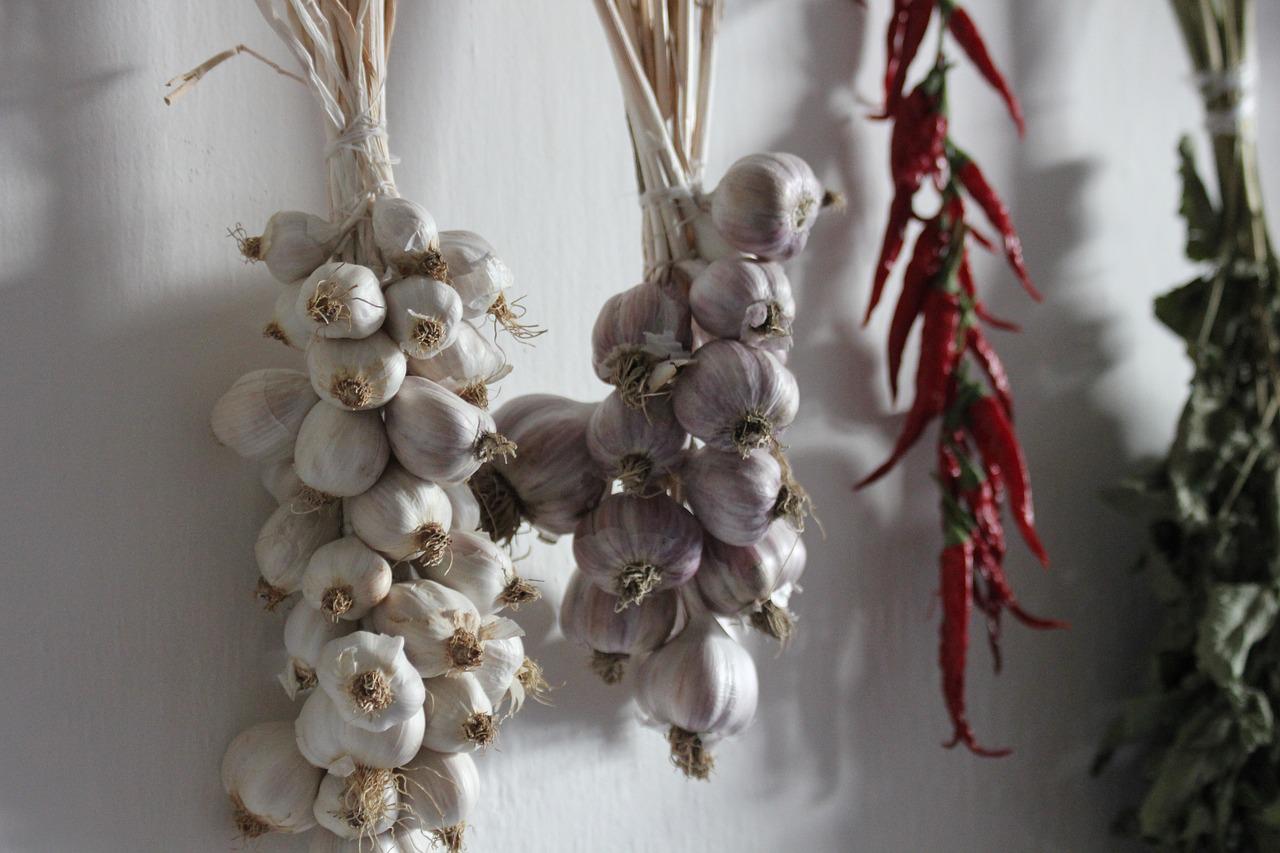
The Following Vegetables Can Be Placed in the Soil:
- potatoes
- carrots
- beet
- kohlrabi
- turnips
- celery
- daikon
- parsley root
- black salsify
- parsnips
Storing Garlic
Garlic can be kept for between six and eight months in a dry, cool and dark place. If garlic is stored too warm (e.g. in the kitchen), the bulbs may sprout. Once sprouted, garlic loses its intense flavor and becomes mushy. It should therefore be eaten as soon as possible after sprouting.
Drying Garlic
It is worth drying garlic before storing it. This keeps the bulb for longer. Do not wash the garlic beforehand, as this greatly increases the risk of mold growth and rotting. However, remove any loose skins from the bulb and tie several plants together by the stems. Caution: Do not remove the entire outer skin, as this protects against drying out! Hang the tubers in bundles to dry in a dry and covered place outdoors or indoors. After about two to three weeks, the dry leaves will begin to rustle. The garlic bulbs are now ready to be stored in a cool, dark and above all dry place (cellar).
Where to Store Garlic?
Caution: Garlic should not be stored in plastic bags! It will become too moist and mold and rot will form!
- Garlic can be stored in containers such as special garlic pots made of clay or ceramic pots. The dry leaves (stems) are cut off for this purpose.
- A traditional way to store garlic is to braid garlic braids. The bulbs can then be hung up decoratively in a dry corner of the kitchen or pantry.
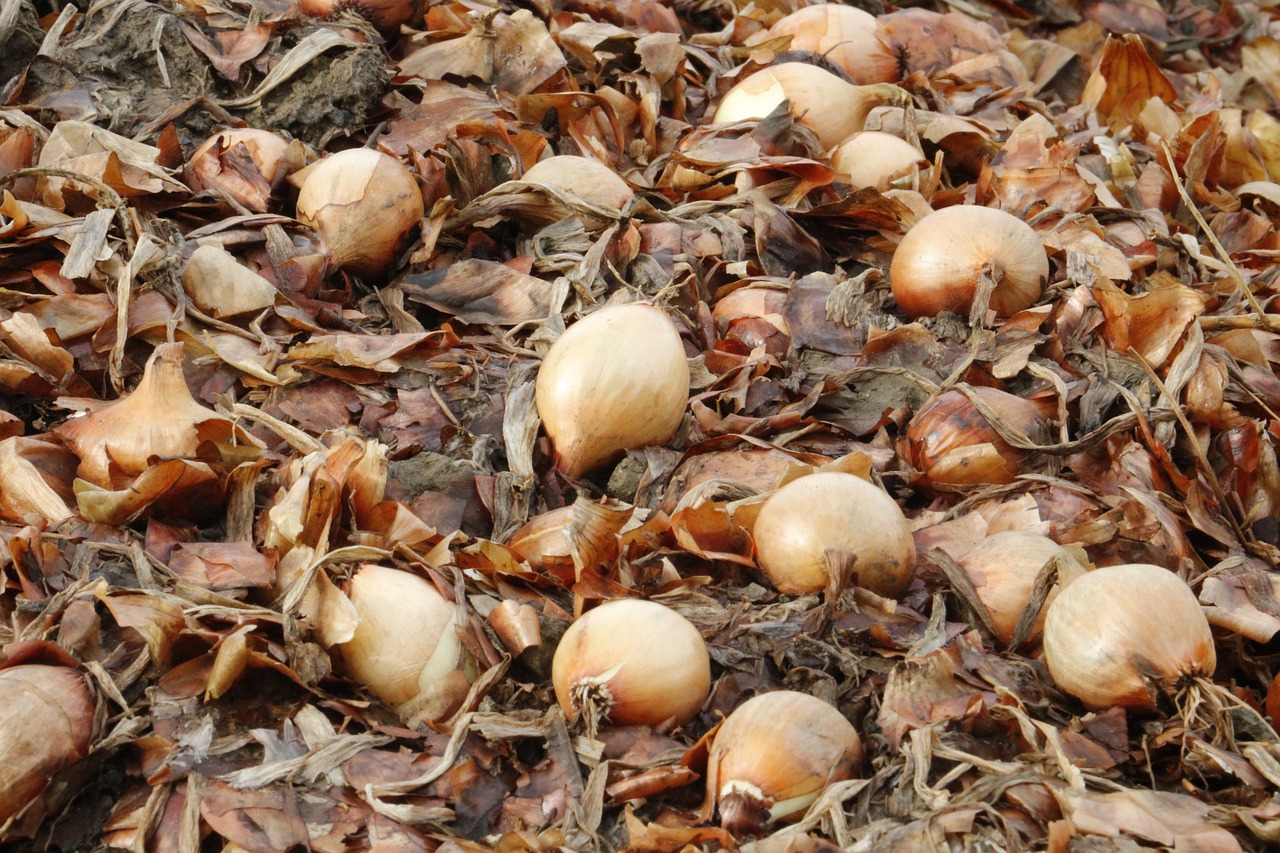
Storing Onions
If you want to store onions, they should already be "pre-dried" in the field. This means that the leaves should already be folded over and dry on the ground before they are harvested. Before that, the onions are still too juicy. Like garlic, onions start to sprout if they are exposed to too much light and heat. Plastic bags are also not suitable for storing onions, as mold or rot will form in the damp environment. Onions can be stored for up to six months in cool (8 - 10 ° C/ 46 - 50 ° F), dry and dark conditions. You can find More Tips on Storing Onions here.
Allow the Onions to Ripen
After harvesting, onions should be left to ripen for one to two weeks. This can be done directly in the field if the conditions are very dry. In damp weather, a shed or other covered area also offers a good opportunity to ripen and dry out.
Drying and Storing Onions
After ripening, onions must be dried. An airy, dry and dark place is suitable for this, such as a garden shed or a dark pantry. As with garlic, you can hang the onions up to dry by their leaves. Onion braids are particularly decorative and stable. Make sure that it doesn't get too hot, as the bulbs' protective skins will burst if they dry too quickly. Another option is to dry the onions in a wooden box. To do this, the onions should be placed as airily as possible so that no mold develops. The onions can then also be stored under these conditions.

Storing Cabbage
Heads of cabbage such as white cabbage or red cabbage can keep for several months if stored correctly. To do this, store the cabbages in a dark, cool pantry or in a cool cellar. You can either place the cabbage in boxes or attach a string to the stalk and hang the cabbage upside down. Storing upside down reduces the risk of storage rot. Kale, Brussels sprouts or black cabbage are better left to overwinter in the field and then harvested as and when required.
Storing Pumpkin
Undamaged pumpkins can be stored for several months, musk pumpkins even up to a year! It is important that you make sure you plant so-called "winter pumpkins". These varieties have a particularly hard skin that protects them from disease and drying out - perfect for storing throughout the winter.
Shelf Life of Various Winter Squashes:
- hokkaido (5 - 6 months)
- muscat pumpkin (8 months)
- musk pumpkin (up to 1 year)
- butternut squash (3 months)
- sweet Dumpling (5 months)
- spaghetti squash (8 months)
Allow pumpkins to ripen before storing
Before you store the pumpkins, you should allow them to ripen for around two to three weeks. To do this, place your winter pumpkins in a bright, dry place that is at least 20 ° C/68 ° F. In dry weather, it is possible to ripen them in the field, but as it is often damp and cool in the fall, I recommend the windowsill. The pumpkins can then be stored in a dry, cool (12 - 17 ° C/54 - 63 ° F) and dark place (cellar, pantry). A wooden shelf on which the pumpkins can be placed is ideal for this. Cardboard or multi-layered newspaper as a base reduces bruising. Storage rot can occur at temperatures below 10 ° C/50 ° F. But be careful: damaged or already cut pumpkins should be stored in the fridge. The pieces will stay fresh for about 4 days. Find out more about Harvesting and Storing Pumpkins here.
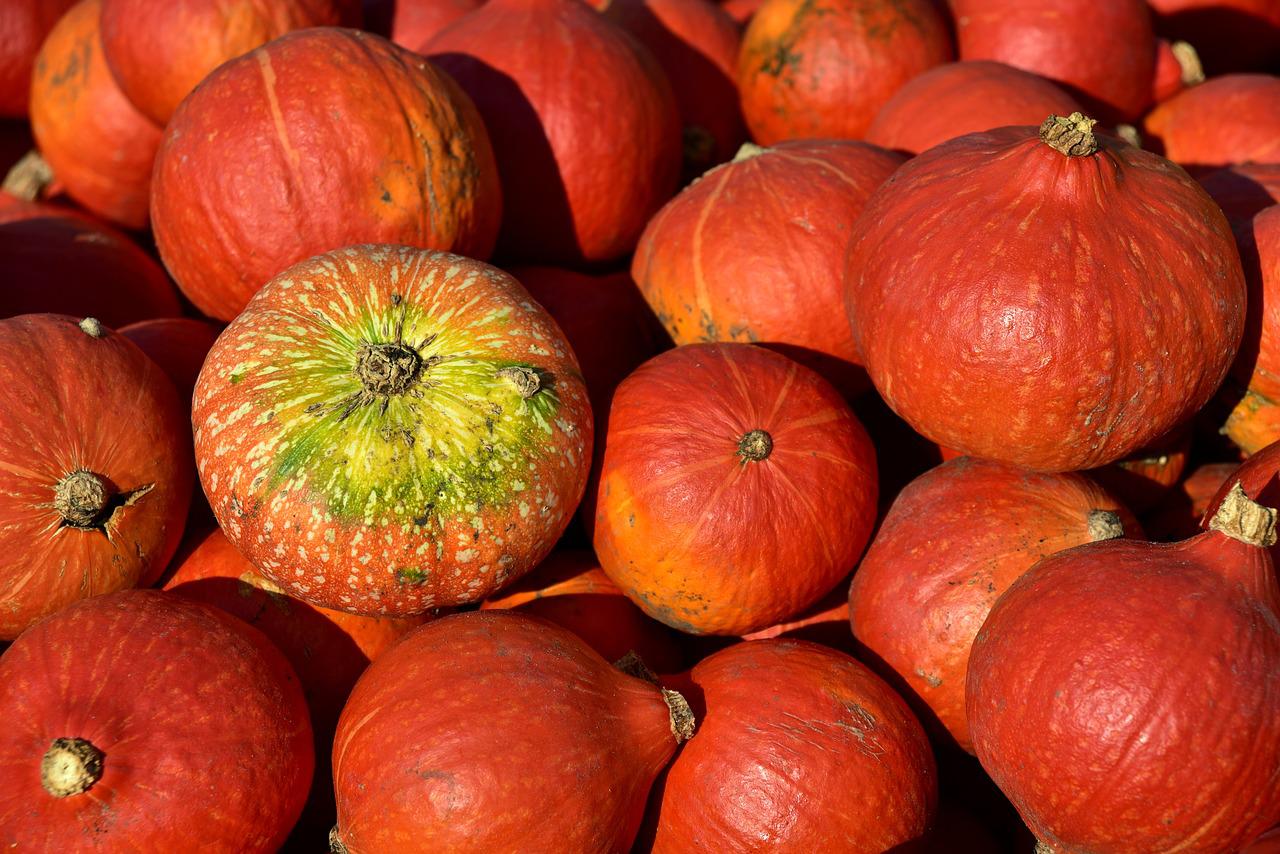
We hope you now have a good overview of how to store vegetables. If you have any questions or comments, please write to us at [email protected].
Do you want to get helpful gardening tips all year round and plan your own beds optimally? Then register here or download the Fryd app for Android or iOS.
Fryd - your digital bed planner

Isabell
Isabell studies agricultural sciences and loves to be surprised by nature and its complexity again and again. Herbs - whether gathered wild or in the garden - are her passion.
Learn MoreCurrent Topics in the Community
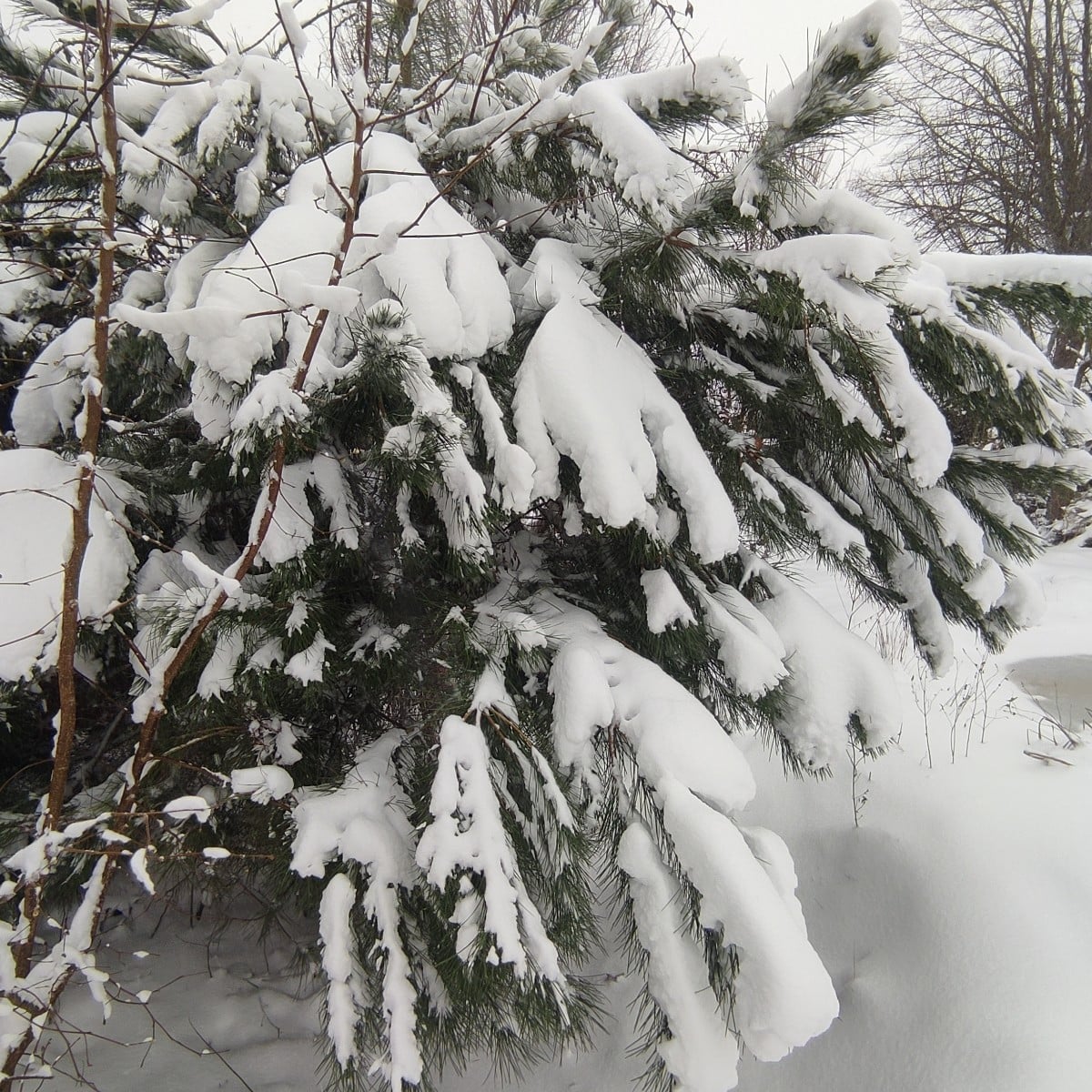
Liked 1 times
The pine tree is bearing the weight of the snow.
Show 1 answer
Hello lovelies, I could use your advice...this year I planted @rosenkohl and @gruenkohl for the first time. The kale grew really well after planting in the fall and had really big leaves until the cabbage white butterfly attacked it. I then harvested quite a bit and put netting over it, but somehow it hasn't really recovered since then. We've had frost since last week and it snowed yesterday, the temperature during the day is 0°C. The kale and Brussels sprouts are now looking very weak and I'm wondering where the fault lies, as both varieties should be able to withstand such low temperatures? Does anyone have any tips?
Show 5 answers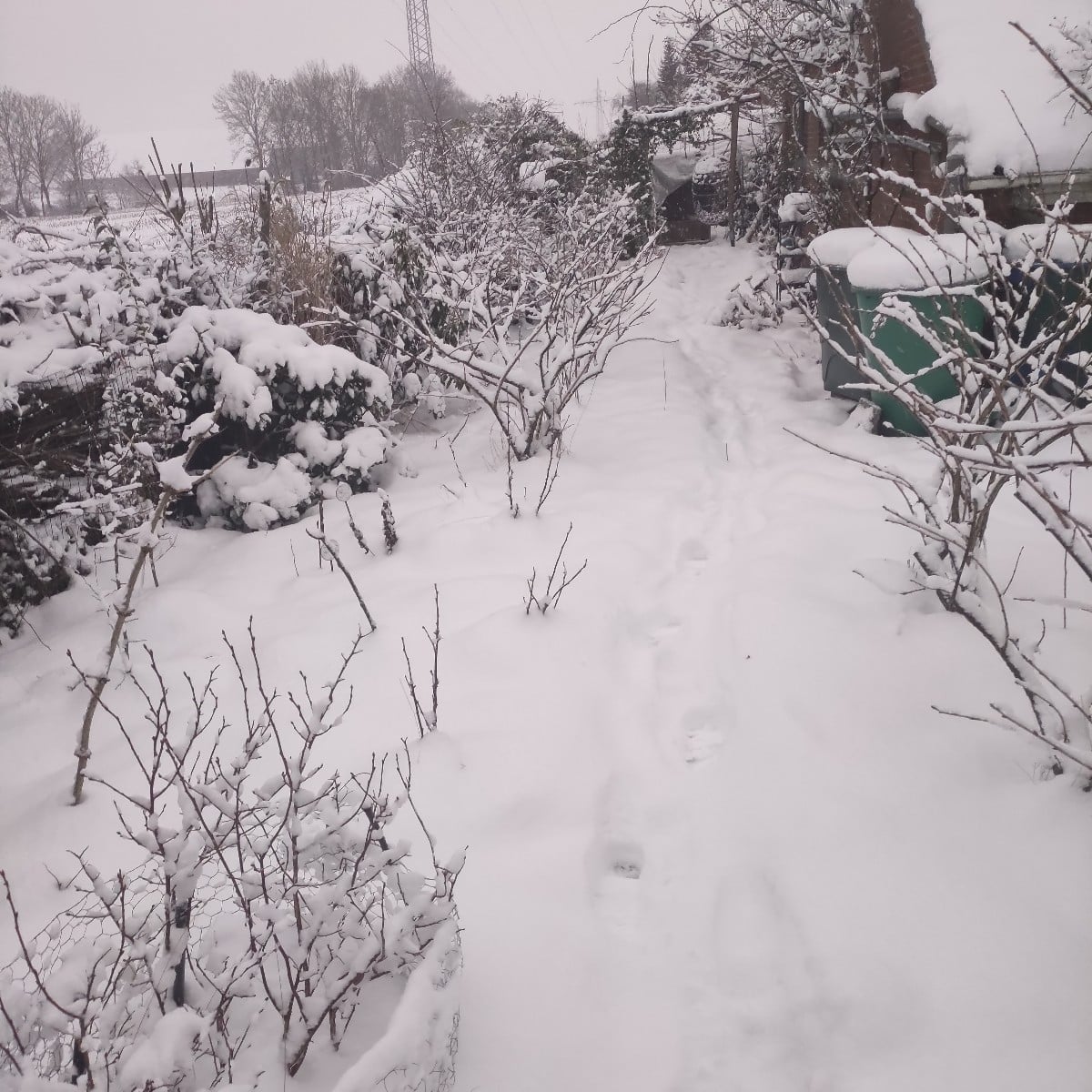
Liked 1 times
It stops being beautiful. ☃️☃️
Show 1 answerPopular Articles

Overwintering Parsley: How to Do It Successfully

How to Grow Lettuce in Winter: Varieties, Sowing, Harvesting

Growing Sage Plant: Tips for Sowing and Harvesting

What Herbs Can Be Planted Together?

Create & Design a Permaculture Garden

Overwintering Plants: Tubs, Pots and Raised Beds

Pruning, Fertilizing & Propagating Currants: Care Tips

Pruning Raspberries: How to Do It

Vegetable Garden With Greenhouse: How to Use Greenhouse Effect

Winterizing Beds and the Garden: How to Do It
FAQ
What is the best way to store carrots?
Carrots should be stored in damp sand, ideally in a dark, cool room with high humidity.
What is a ground rent and what is it good for?
An earth pit is a pit dug into the ground that provides optimum storage conditions for root vegetables and can be used without a cellar.
What is the best way to store garlic?
After drying, garlic should be stored in a cool, dark and dry place to maximize its shelf life.
What conditions are ideal for storing onions?
After drying, onions should be stored in cool, dry and dark conditions to ensure a long shelf life.